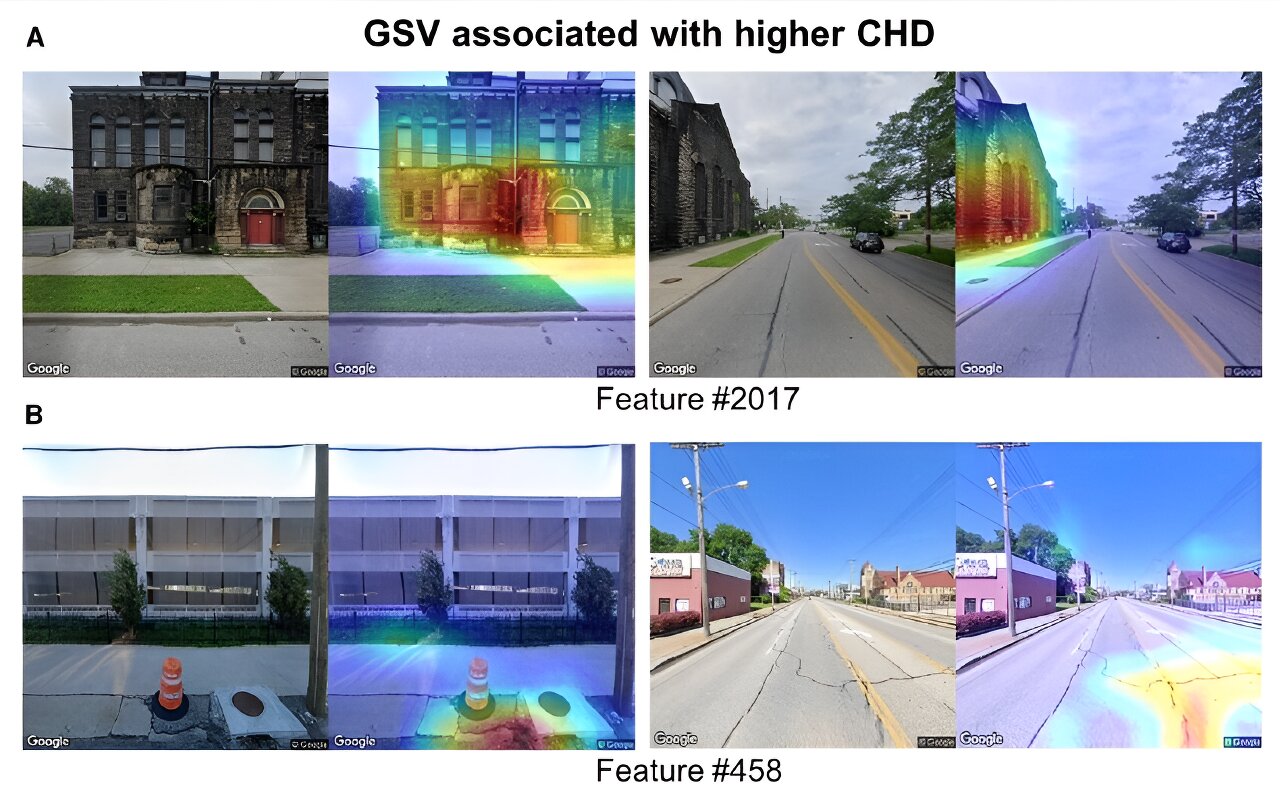
Here’s a link to the actual paper, free to read. Notably, the paper starts with the assumption that other studies have already identified a link between environmental factors and heart disease. The focus is on how useful it is to collect that data through street view analysis as opposed to say sending someone out to survey a neighborhood. Also if image analysis can identify interesting environmental factors that researchers may not have identified previously. I can’t comment on their statistics, but they at least claim to be looking for the environmental affect by accounting for age, sex, race, income, and education.

This is one of those posts that could never go on modern-Reddit without a bunch of dudes who peaked in high school saying it’s “bullshit”
This is a very cool fusion of decades of research and technology. There are definitely concerns to be had over its use in the private sector and the general loss of privacy over time as technology develops - but if nothing else it’s really fascinating from an academic and public health approach.

The pictures sure make it look like bullshit.
Here’s a depressed, post-industrial area where heart disease is more common.
Here’s a suburb full of McMansions where heart disease is less common.
Gutter downspouts, masonry, bars on windows, and cracked pavement are positively correlated with heart disease and tree-lined sidewalks, big lawns and wraparound porches are negatively correlated with heart disease… go figure.

Welcome to the scientific process man: you’ve managed to deduce an obvious correlation. People also understood that living in fetid conditions led to disease for centuries before figuring out how they’re actually related (with several deeply incorrect theories along the way).
This is a way to measure that correlation and use that data for future analysis. The researchers doing this work are investigating things at a much more finite level than “duh-doy being poor is bad!!”

I mean, fair enough, but there’s an actual connection between stinking pools of human waste and disease that was not understood due to a lack of adequate scientific equipment at the time.
In this case, we already know that poor communities have higher rates of pollution due to prior and ongoing industrial activity and traffic, and we can link specific pollutants to specific diseases. We know these places have poorer access to nutrition and higher rates of obesity related to the consumption of prepared and preserved foods. We know there are higher rates of substance abuse.
The environmental justice movement has existed for 40 years. We know what the problems are. We’ve had the data and technology to identify problem areas for decades.
I appreciate a novel approach, but I can’t help thinking about the energy demands of using AI to analyze Street View imagery, and where that energy comes from (still probably a fossil fuel power plant), and what kind of neighborhood that power plant might be located near.

“Well, fair enough, but we already know the miasma caused by fetid odors is what causes illness, not to mention the spontaneous generation causing all sorts of parasites to rise from the dust” -some guy in 1256
I’m not trying to be mean to you, but this type of subject and analysis is just at a different kind of “level” of research than the very basic cause-> effect observational type of science. We can isolate out factors you’ve mentioned (such as air quality, diet, etc) and still look around at purely built environment factors and see how much it impacts health. “We’ve run the numbers and determined that having a sidewalk outside of your house lowers your lifetime health expenditures by $1230, and we can extrapolate that data to give to cities so they can make better decisions on how they plan housing areas” is a pretty huge ability to have. And that’s an “obvious” kind of result! Maybe they find a correlation between having a biodeverse lawn and longevity/health! We simply do not know, and this tech lets us get a bit closer.

Using AI to conjure correlations out of data seems more like speculating about miasma and dust parasites to me. I suppose if we can drill down from the wealth of correlations we generate to find something actually useful, that’s potential, but good lord the examples in the article are not inspiring. I think if anything, the potential here is identifying problem areas and targeting solutions at them, something that actual people have to do currently, rather than establishing any link between built environment and heart disease that we don’t already understand, because, you know, it’s not 1256 anymore.

I just don’t really think that this is your field

It’s precisely because this is my field (public built environments) that I’m so skeptical of claims based on dubious statistical relationships. I’m willing to be convinced, of course, but if you had to go into a meeting with public officials and make suggestions, these are the sorts of questions you should be expecting. I am not convinced by the public health angle, so far, anyway.

“Well, fair enough, but we already know the miasma caused by fetid odors is what causes illness, not to mention the spontaneous generation causing all sorts of parasites to rise from the dust” -some guy in 1256
I’m not trying to be mean to you, but this type of subject and analysis is just at a different kind of “level” of research than the very basic cause-> effect observational type of science. We can isolate out factors you’ve mentioned (such as air quality, diet, etc) and still look around at purely built environment factors and see how much it impacts health. “We’ve run the numbers and determined that having a sidewalk outside of your house lowers your lifetime health expenditures by $1230, and we can extrapolate that data to give to cities so they can make better decisions on how they plan housing areas” is a pretty huge ability to have. And that’s an “obvious” kind of result! Maybe they find a correlation between having a biodeverse lawn and longevity/health! We simply do not know, and this tech lets us get a bit closer.

Except all they really did was take regional heart disease rates and threw a machine learning task at Google street view. They might as well have made a machine learning model that identities wealthy neighborhood features, not actually things which impact heart disease. This just sounds like a hammer looking for nails.
To be more specific, they took a correlation, slapped ai on it, and found the same correlation out the other side.


